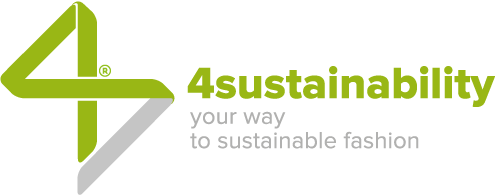by Francesca Rulli
Child exploitation, starvation wages, the denial of human rights… The social issues related to global fashion production are well-known. And yet, too little is being done to resolve these issues at their roots.
That’s not all. Today, we are witnessing troubling environmental phenomena. Let’s look at some of these together to understand why they are an indication that a radical change is urgent especially at the cultural level.
The Atacama desert and its “dunes”
In November 2021, Al Jazeera published Chile’s desert dumping ground for fast fashion leftovers, denouncing the “dunes” of clothing found in Chile’s Atacama Desert. Yes, clothing!
Every year, 59 thousand tons of clothes arrive at the port of Iquique, a city in northern Chile. Some clothes are sold to traders in the capital city Santiago, 1800 km to the South, while many others are smuggled to other Latin American countries. The rest – around 39 thousand tons – are dumped in the desert. Why do they end up in no man’s land? Because no one is willing to pay to take them away.
Africa’s polluted rivers
The pollution of Africa’s waterways is a major and well-documented environmental issue. In August 2021, the charity organization Water Witness International published its report How fair is fashion’s water footprint investigating these problems.
Lesotho’s rivers, for example, are highly polluted with the blue dye used for denim. In Tanzania, water samples collected inside a textile factory indicated a pH of 12, the equivalent of common bleach. And if we consider the fact that this water is used by local communities for food, field irrigation, and hygiene, it’s easy to imagine the kind of damages caused to humans and to the environment.
Amazon deforestation
To understand the fashion industry’s links with deforestation, we need to go to South America, and in particular the Amazon.
According to Stand.earth’s report Nowhere to hide: how the fashion industry is linked to Amazon rainforest destruction, there is a close relationship between the two. A great number of big fashion companies purchase leather from producers and tanneries that are devastating the planet’s lungs. This invasion into the Amazon by the cattle industry is driven by intensive farming practices and the high demand for leather goods, which according to the International Council of Tanners (ICT), is growing.
Beyond the visible
Ecowatch’s article Fast Fashion 101: Everything you need to know demonstrates the disastrous effects of the fashion industry has on our planet that may not be visible to the naked eye. According to the Ellen MacArthur Foundation, the sector is responsible for 10% of global CO2 emissions. A significant portion of these emissions are caused by the long journeys clothes currently take from the areas in which they are produced to those where they are sold and eventually disposed.
One issue mostly related to fast fashion is the dying process for cheap fashion products. The toxic mix of chemical substances that is widely used in these processes is, yet again, dispersed into the surrounding environment.
Textile waste: a look at the numbers
According to an article published a couple years ago, textile waste increased by 811% between 1960 and 2015, growing from 1.7 to 16 million tons.
In their 2017 report A New Textiles Economy: Redesigning fashion’s future, the Ellen MacArthur Foundation revealed that the average amount of times that a clothing item was worn before being thrown away has decreased by 36% in the last 15 years. The glaring consequence of this tendency is the exponential increase in waste.
McKinsey’s Style that’s sustainable: a new fast-fashion formula found that clothing production doubled between 2000 and 2014, with a 60% increase in the number of clothing products acquired per capita. With the speeding up of production cycles and the creation of ever new designs, consumers have infinite possibilities to renew their wardrobe. According to some estimates, cheap fashion appears to be the culprit of much of this wear-and-discard phenomenon as their products are trashed after a maximum of 7-8 uses.
Consumer behaviour
Why people conveniently ‘forget’ that child labor made their jeans is a fascinating article by MarketWatch on the selective memory of consumers who learn of the not-so-sustainable origin of the specific item in which they are interested. According to a Ohio State University study, humans activate two mechanisms when presented with emotionally difficult ethical information. On the one hand, there is a tendency to completely forget the issue. On the other, people erroneously remember these unethical aspects as good and morally right.
And then there’s social media pressure and the continuous onslaught of the latest celebrity trends. The constant bombardment of stimuli on the Internet accelerates the fast fashion cycle, making us feel forever behind and obligated to catch up with the latest trends.
A 2017 survey showed how 41% of young people between the ages of 18 and 25 felt the need to wear different clothes every time they left their home. Why? Because every outfit is scrupulously documented on social media and so wearing a piece of clothing more than once is out of the question. Arguable, of course, but these are the real feelings that young people live with.
Turning the tide
If this is really how people behave, and if it truly is the case that even if we are aware of certain issues, we are incoherent in our purchasing choices, then the current responses are insufficient.
I have recently published a book entitled Fashionisti consapevoli. Vademecum della moda sostenibile (Flaccovio Editore), where I try to organize some of my reflections on these questions for a wide audience. If I have managed to bring even one person over to the cause, this effort will have been worthwhile. The data and evidence that is compiled in this book, part of which you find here, are horrifying, unequivocal, and “scream” the urgency of turning the tide! It is a pity that, at the end of the day, we are continuing to do as we have always done.
We must act on two fronts. First, we need to ensure that increasing numbers of people ask themselves the right questions before buying clothes. Second, companies must work together to develop ways to fully inform the consumer. This means equipping consumers with simple tools to understand the difference between a product that is truly sustainable, which means produced by a sustainable brand with a sustainable supply chain, and a product that is made in violation with ethical standards, as well as social and environmental responsibility.
There are many projects in motion that work on these fronts, among which the 4sustainability system which I discuss in the book. The biggest challenge, however, is upstream, and involves slow cultural shifts, changes in our ways of thinking, and a break with the logics of production and consumption… This will take time, but we know the path.

